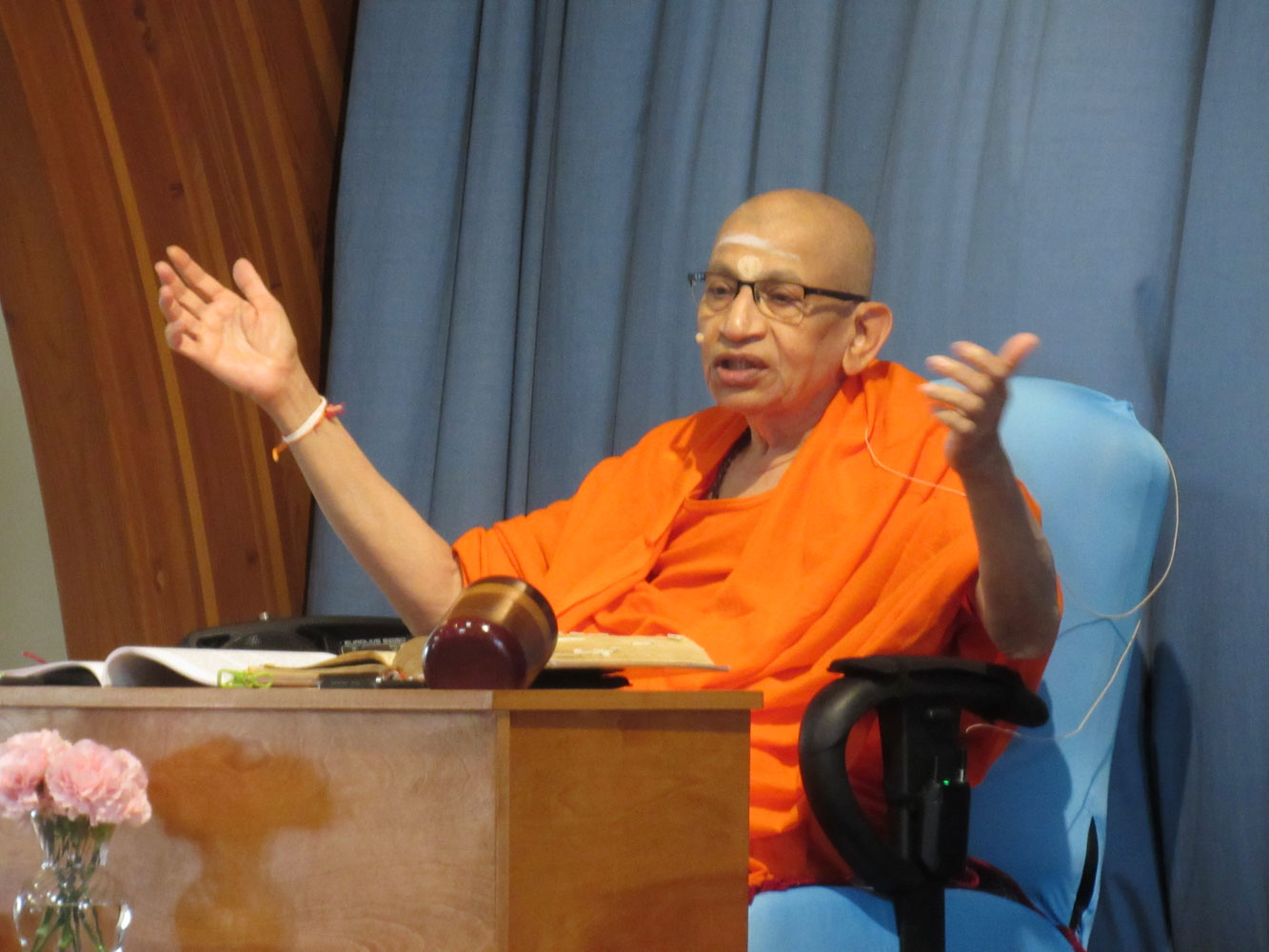

In-Person and Online
TOPICS and TEACHERS:
Anityamasukhaṁ lokamimaṁ prāpya bhajasva mām (Bhagavad Gītā, 9.33) with Swami Viditatmananda
Uddharet ātmanātmānaṁ nātmānam avasādayet (Bhagavad Gītā, 6.5) with Swamini Paraprajnananda
REGISTRATION for In-Person Attendance:
Contact
Vimalaji at (570) 656-0193
or
Suddhatmaji at suddhatma@gmail.com
ONLINE Viewing available on YouTube HERE
DESCRIPTION:
Anityamasukhaṁ lokamimaṁ prāpya bhajasva mām (Bhagavad Gītā, 9.33)
“Having gained this world, which is of little happiness, may you seek me,” Lord Krishna says to Arjuna. As a human being, one has the unique opportunity to choose lasting happiness over the fleeting happiness one experiences here. How? By seeking and thereby understanding Bhagavān, the source of all happiness, as the truth of yourself.
Uddharet ātmanātmānaṁ nātmānam avasādayet (Bhagavad Gītā, 6.5)
“May one lift oneself by oneself; May one not destroy oneself.” With these words Lord Krishna makes it very clear that one has to help oneself. Ignorance is something we are born with and if we don’t do anything about it, it will perpetuate. It is our responsibility towards ourselves not to let ourselves get destroyed. We must be both beneficiary and benefactor to ourselves, because otherwise we will wind up being an enemy to ourselves.
SCHEDULE:
All times are Eastern Time (UTC-4)
Saturday, July 1
8:00-9:00 pm Orientation and Satsang with Suddhatmaji and Swami Viditatmanandaji
Sunday, July 2
7:00-7:30 am Guided Meditation with Swamini Paraprajnanandaji
9:00-9:45 am Vedic Chanting Class with Suddhatmaji
10:00-11:00 am Bhagavad Gita 9.33 with Swami Viditatmanandaji
11:30am-12:30pm Bhagavad Gita 9.33 with Swami Viditatmanandaji
5:00-6:00 pm Bhagavad Gita 6.5 with Swamini Paraprajnanandaji
8:00-9:00 pm Satsang Q&A with Swami Viditatmanandaji
Monday, July 3
7:00-7:30 am Guided Meditation with Swamini Paraprajnanandaji
9:00-10:00 am Bhagavad Gita 9.33 with Swami Viditatmanandaji
11:00am-12:30pm Gurupurnima Celebration (Abhisheka, Swamiji’s talk and Archana)
5:00-6:00 pm Bhagavad Gita 6.5 with Swamini Paraprajnanandaji
8:00-9:00 pm Satsang Q&A with Swami Viditatmanandaji
Tuesday, July 4
7:00-7:30 am Guided Meditation with Swamini Paraprajnanandaji
9:00-10:00 am Bhagavad Gita 6.5 with Swamini Paraprajnanandaji
11:00am-12:00pm Bhagavad Gita 9.33 with Swami Viditatmanandaji
12:00pm Gurudakshina and Arati